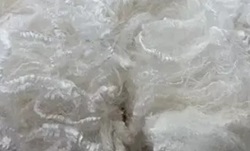Aramid Fiber Properties and Characteristics

Complete description of Aramid Fiber
Aramid fiber is a synthetic polymer material. DuPont developed and produced this fiber. It has gained popularity in this area due to its properties and versatility. From body armor to technically demanding products requiring high levels of strength, flexibility, or performance, Nomex finds application in diverse areas such as sports gear and accessories.
Aramid fiber is a lightweight fiber. Its composition is primarily carbon, endowing it with the specific capability to absorb exceptionally high levels of heat. Aramid works by absorbing high levels of the sun’s heat. It can cause it to become up to 8 times thicker than steel. Aramid is strong. It can support a payload equivalent to up to 10 concrete slabs, withstanding very heavy loads from earthquakes and hurricanes.
Aramid fibers are the strongest biological fibers on the planet. They are strong and light, with high modulus, resulting in a high strength to weight ratio for the most demanding applications. They serve various purposes, acting as reinforcement in composite laminates, forming ballistic materials for bulletproof vests, contributing to parachute construction, and being integral in the production of fabrics like thermal protective clothing.
Aramid is a combination of carbon, hydrogen and oxygen gases used in the manufacture of high-performance membranes. Manufacturers craft the fibers using various ingredients like starch, cellulose, cellulose ester, or phosphor. These ingredients are melt spun with an inner core of heat-resistant material, forming a specialized high-temperature-resistant fiber rope. The fibers have excellent abrasion resistance, thermal insulation properties, moisture resistance and chemical resistance.
End use of Aramid Fabrics
A vast array of applications use this material as an end-user, employing it as filling material, insulation, reinforcement, and a separator.
Aramid fabric, used in the making of bulletproof vests and other defense-related items. Manufacturers spin aramid, a lightweight and robust synthetic fiber, into fabrics so thin they appear nearly transparent, resembling paper-thin materials.
These fabrics find application in areas that demand high performance, low weight, and resistance to abrasion. They can be used as a part of landing gear or rotor blades, or they can be used as part of protective clothing. Their outstanding mechanical properties and lightweight nature make them particularly well-suited for space travel, meeting the demands of both strength and weight under such circumstances.
Aramid, also known as Kevlar, serves in the construction of aircraft, armored vehicles, boats, and various marine applications. Other uses include clothing, housing, tents, flooring and large appliances. Aramid fabric may also be used in fire resistance system between buildings or concrete structures.
